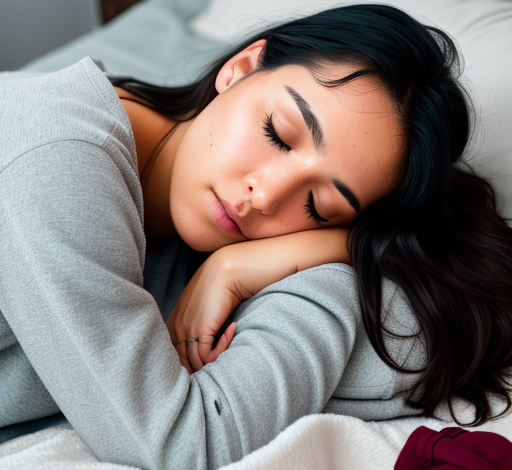
What Does REM Stand For? Understanding the Science of Sleep
Sleep is a vital aspect of our lives, and it plays a crucial role in our physical and mental well-being. One of the most important stages of sleep is REM sleep, which stands for Rapid Eye Movement. In this blog post, we will explore what REM sleep is, its importance, and how to increase and improve REM sleep.
What Does REM Stand for?
REM stands for rapid eye movement which is a stage of sleep characterized by quick eye movements, increased brain activity, and vivid dreams. It is one of the five stages of sleep and typically occurs 90 minutes after falling asleep. During REM sleep, the body is in a state of paralysis, and the muscles are relaxed, except for the muscles that control breathing and eye movement.
The Importance of REM Sleep
REM sleep is essential for various reasons. It plays a crucial role in memory consolidation, learning, and emotional regulation. During REM sleep, the brain processes and consolidates information from the day, which helps us retain memories and learn new skills. Additionally, REM sleep is associated with emotional regulation, and a lack of REM sleep can lead to mood disorders such as depression and anxiety.
How to Increase REM Sleep?
There are several ways to improve REM sleep:
- Stick to a Regular Sleep Schedule: Going to bed and waking up at the same time every day, including weekends, helps regulate your body’s internal clock and promotes consistent REM sleep.
- Create an Ideal Sleep Environment: Ensure your bedroom is cool, dark, and quiet to promote uninterrupted sleep. Use earplugs, eye masks, or white noise machines if necessary.
- Avoid Stimulants: Limit or avoid caffeine and nicotine, especially later in the day, as they can interfere with sleep and reduce REM sleep.
- Limit Alcohol Consumption: While alcohol may initially make you sleepy, it can disrupt your sleep cycles, including REM sleep. It’s best to avoid alcohol close to bedtime.
- Practice Relaxation Techniques: Engaging in relaxation techniques such as deep breathing, meditation, or gentle stretching before bed can help calm your mind and prepare your body for restful sleep.
- Exercise Regularly: Regular physical activity, such as aerobic exercises or yoga, can improve the quality of your sleep, including REM sleep. Aim for at least 30 minutes of exercise most days of the week.
- Manage Stress: High levels of stress can interfere with sleep, including REM sleep. Find healthy ways to manage stress, such as practicing mindfulness, journaling, or seeking support from a therapist.
- Avoid Heavy Meals Before Bed: Eating large, heavy meals close to bedtime can disrupt sleep. Opt for lighter, balanced meals and allow time for digestion before lying down.
Following the mentioned key points is a great start to improve REM sleep.
How Much REM Sleep Should I Get?
The amount of REM sleep needed varies depending on age. Infants spend the most time in REM sleep, accounting for up to 50% of their sleep time. Adults typically spend 20-25% of their sleep time in REM sleep. However, the amount of REM sleep needed can vary depending on individual needs and lifestyle factors. Knowing the average requirements is necessary for knowing how much REM sleep should you get. It will benefit your sleep tracking routine; hence, understand your sleep data from smart devices.
Overall, REM sleep is a crucial stage of sleep that plays a vital role in memory consolidation, learning, and emotional regulation. Understanding the importance of REM sleep and how to increase and improve it can help improve overall sleep quality and well-being. By establishing a sleep routine, reducing stress, avoiding stimulants, exercising regularly, and creating a sleep-conducive environment, you can improve your REM sleep and enjoy the benefits of a good night’s sleep.
Feel free to check out our blog posts about the meanings of different dreams.


